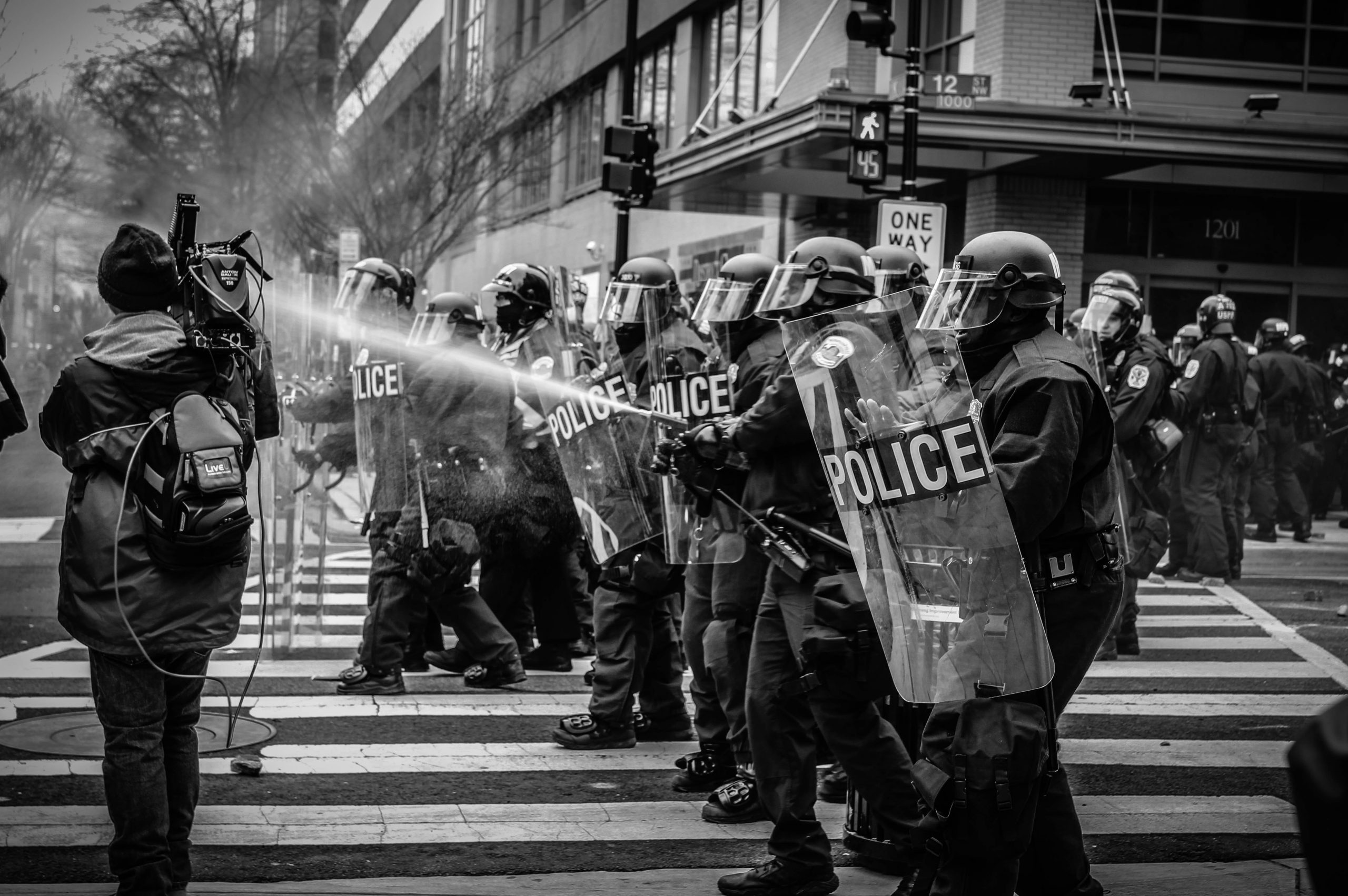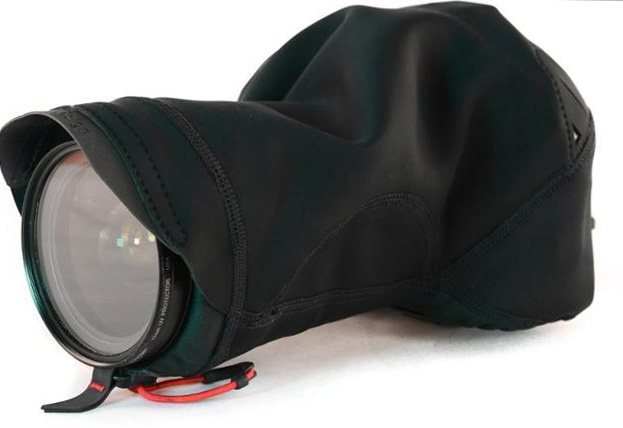The powerful, yet gripping photos documenting the George Floyd protests. The compelling image of fellow Americans storming of the capitol helped document the changing course of our history. Behind the lens of a camera while capturing these events are brave photojournalists of all levels like Stringers.
History demands that protests must be documented, but as a photographer, you must also take safety measures. These events are unpredictable. They can change from peaceful to dangerous in a matter of minutes. Emotional crowds are a challenging environment. Follow the orders of the police. Always keep safety in mind.
When pointing the camera at a group or an individual and they would rather not have their image taken, simply move on. Yes, you have the right to the photo. But simply remain passive, realize the limits, rely on experience, and common sense, and listen to that inner voice.
It is also the safety of journalists that is important when photographing events like the storming of the Capitol or the George Floyd protests. Let us look at a few protest photography tips on how to take photos at protests safely and smartly.
Packing for a Protest
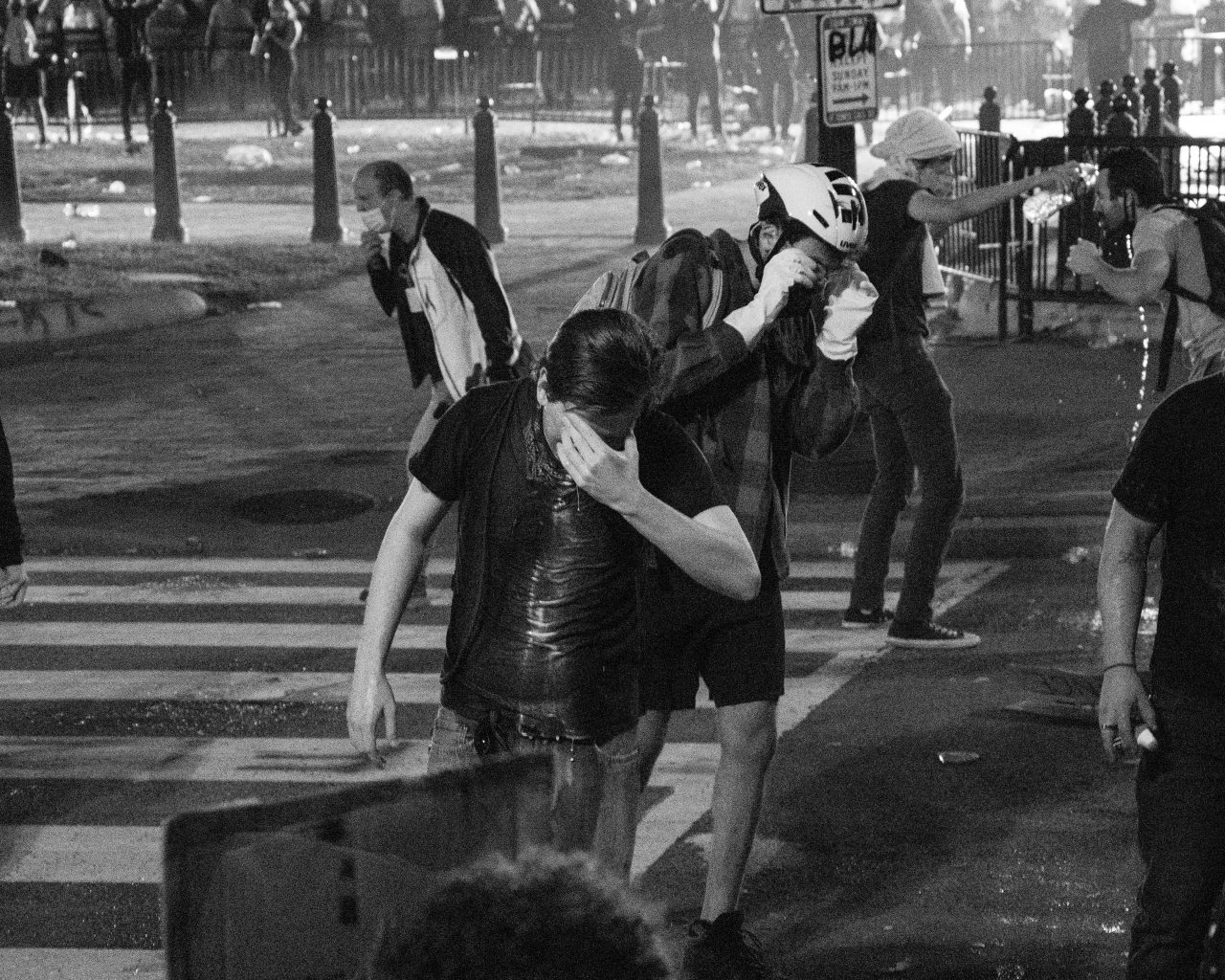
In addition to packing the required photography equipment, just carry what is necessary to remain safe and agile. Photographing a protest on the streets is a location where one never knows what could happen.
Stay alert! Using the camera’s rear display rather than a viewfinder allows for better shots without being a part of the fray. Also, using a lens or camera with a fixed focal length. If you are using a zoom, keep one eye on your optical viewfinder and the other eye on people, places, and things nearby.
Pack two cameras already prepped so that there is no need to change lenses. In today’s climate of demonstrations and protests, what photographer thought they would have to pack for defense? Depending on how large the protest is, experienced Stringers and photojournalists report that they have packed the following: protective headgear, ballistic glasses, tactical vest, respirator (full face), and a COVID mask.
Protective gear is vital based on a photographer in Minneapolis. Tear gas was being used. As she ran her goggles fell off. In that second, a rubber bullet hit her face. The result was the loss of her left eye. Yes, photographers want to capture surreal photos that can be given to wire services or other media outlets, but do it safely.
Always carry your identification or credentials, including a current press card, and keep it visible. However, if the situation starts to escalate then make an escape route in advance and leave to shoot another day. Remember that the most important component at protests is your life.
Shoot with the Right Equipment

When photographing a protest, photographers find themselves in the middle of huge crowds. A photographic tip is to find that high-angle shot to fully make a difference in capturing the full photo experience. Also, be sure to take a wide-angle lens for the crowd shots and a lens to produce a closer zoom for portraying individual images.
Part of the protest photography tips is to carry extra batteries and memory cards. Personally, keep some water, munchies, and comfortable clothing. The reasoning is because large protests feature blocked roads, meaning journalists may wind up hanging around for hours.
As a photographer, be quick to capture and upload all shots. The benefit of taking this action is because the photos could easily wind up in news articles. For example, the advantage when using a telephoto lens is not to miss a long shot, but also it helps to keep the photographer out of harm’s way.
Don’t shoot with an 85mm – 135mm lens while on the ground in a crowded setting. Before it is realized the crowd can easily begin to close in around the shoot and block the long shot. For this reason, a second camera with a shorter lens should be available to grab and go. See our recommended still cameras here.
Change lenses as quickly as possible so that journalists can stay close to the action. Most importantly, don’t use a flash! Why? Many protesters are agitated, and the police are uneasy. A single event like a camera going off could potentially become a trigger for anything.
Street Clothing
Stringers may not think that the right clothing could warrant problems, but it could. A helpful “do not” tip is not to try and fit in. Do not wear matching protest t-shirts or masks. Simply wear pants and a shirt for both men and women. A fanny pack is a good idea to carry some of your gear in. At times it may be more important to wear boots rather than walking shoes. Dress for the weather. Carry a scarf or hat, especially if sprays or gas propellants suddenly appear.
There Is Safety in Numbers
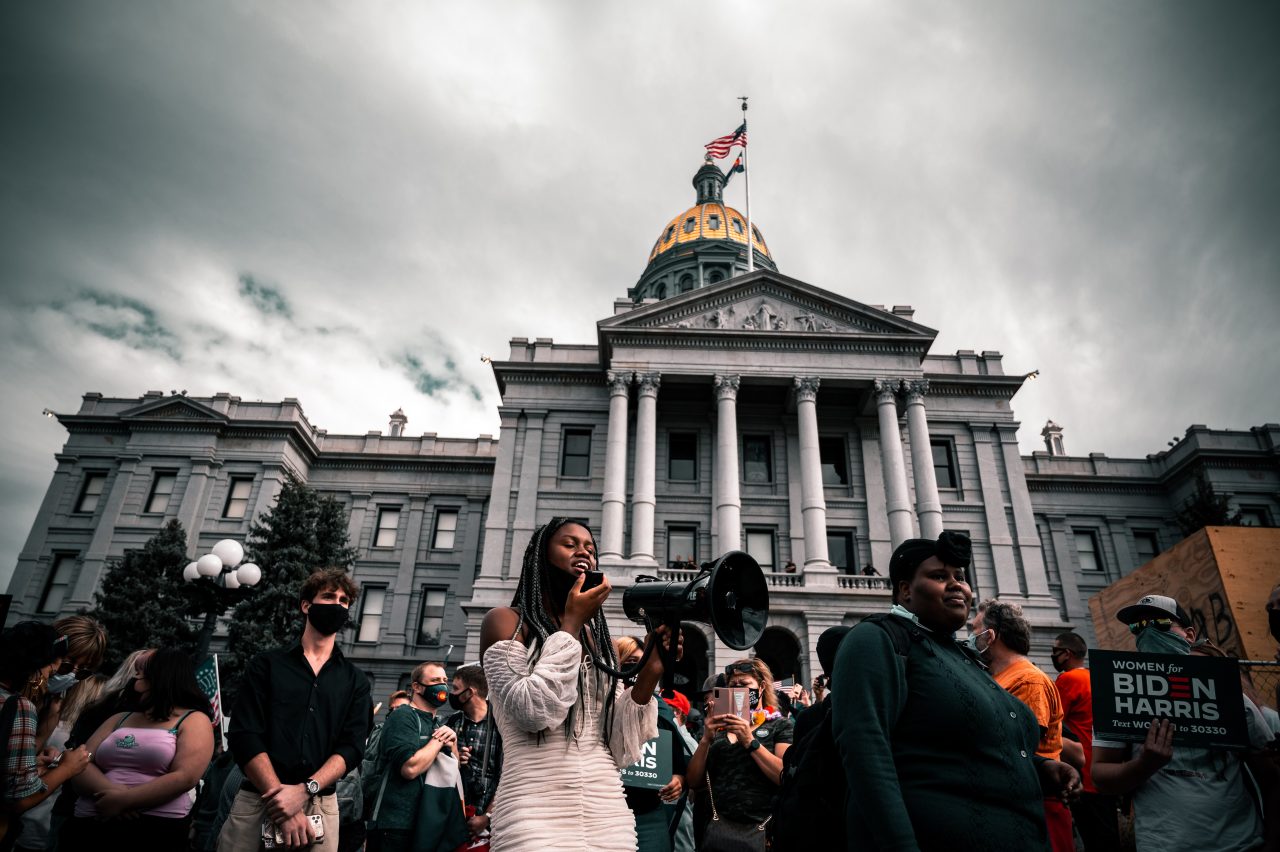
Remember that no man is an island. In large crowds that could potentially turn violent like the storming of the Capitol, it is a good tip to buddy up with other journalists and photographers. This is to provide the safety of journalists. Highlight plans to help one another. Create various meeting points, coordinate coverage, and keep an eye on each other throughout the day.
As a photographers’ attention is often focused within the view frame rather than what is occurring right next to the camera. But when there is a team of journalists it will prove to be safer. The more events you cover, the likelihood that the same professionals will be on hand. This creates a safer work area, plus together the better actions taking place can be captured in award-winning photos or videos.
As a Stringer with minimal experience covering crowds like the George Floyd protests, watch what seasoned colleagues are conducting themselves in the streets. What does this mean? Watch the type of gear they are using, how they follow the crowd even from the outer rims, etc. You can learn a lot from them that will help you on future assignments.
Are You Safe?
This is a personal safety tip for photojournalists and photographers! Have a family member, a close friend, or a colleague not involved in the protest, be your contact spotter. Check-in with these persons throughout the day in case there is an emergency. Choose a time that everyone has agreed upon that will serve as a check-in time.
This could be every 3 hours unless the street event changes negatively, then contact them on an hourly basis. It just makes good sense to have a contact plan in place when the streets could become an embroiled event. After all, police have wrongly jailed many photojournalists and photographers along with protestors.
Camera Weather Sealing
Covering protests means that the streets are your setting. For this reason, your camera equipment should be outfitted with weather sealing. This allows photographers to shoot outdoors in the rain, dust, pepper spray, humidity, gas, marking rounds, and a harsh environment in general. The photographic tip in this instance is to use a camera like a mirrorless or DSLR outfitted with a weather-sealed lens just for that style of camera.
Keep the Camera Rolling
As film directors say, “keep the cameras rolling.” Take as many photos as you can, especially if tensions start to grow. As you are busy snapping photos that could turn into published works, protect your rights. Please note that private citizens, nor law enforcement officials cannot demand that your photographs be turned over to them.
People can only ask for your film or memory cards when acting in accordance with an order by the courts or if law enforcement is conducting an arrest. A photography trick when covering street demonstrations is to keep a “fake” memory card just in case.
Keep Calm and Carry On
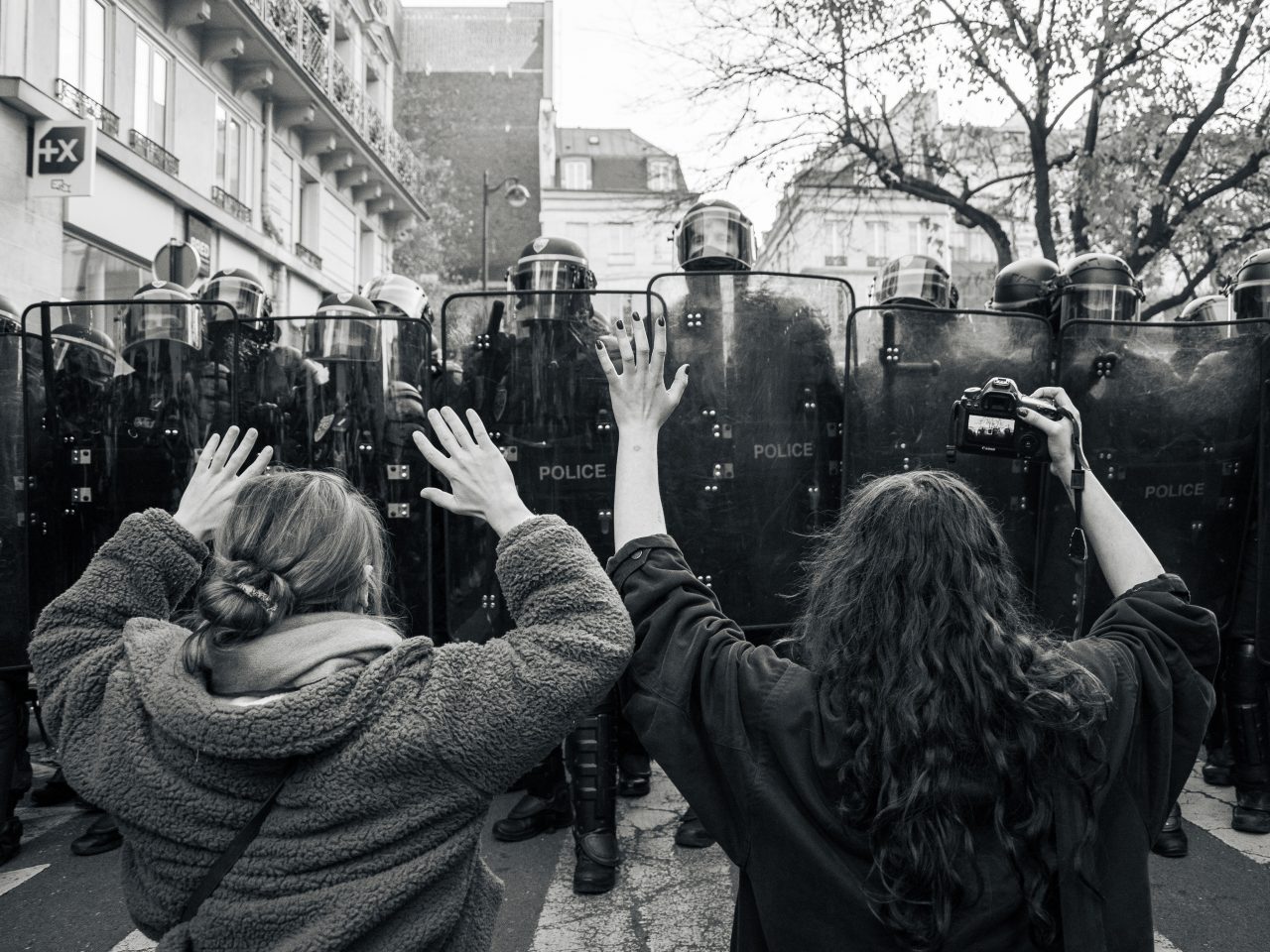
Calm down and relax! After the day that you have had, take time to reflect on all that you have witnessed. Writing down your experiences, what you could have done differently, and sifting through your thoughts, just breath! After you have edited your work, jot down in a diary form what your thoughts were at a particular time. Written notes can often be a lead to the storyline of your photos.
Shockingly men and women are breaking into the U.S. Capitol building. Weeks later there are peaceful protesters by the thousands marching against police brutality in the death of George Floyd. With a camera in your hands, there is motion and volatility during protests and demonstrations. Photographers are anticipating moments that will create an impact, all while trying to convey the right message.
Capturing modern protests means balancing the task of action photography in addition to the possible threat of violence. As a photojournalist covering the events of a protest, your work can be targeted. However, the Reporters Committee for Freedom of the Press has stated that any aggressive action against a journalist violates their First Amendment rights.
Operating a camera today means that the world is able to see history repeating itself. Knowing how to take photos at protests safely is a crucial role of documenting the current protest movements. The images captured by photographers symbolize a social call to action. Photography can be empowering as the world struggles to find words for those painful yet humble moments.

